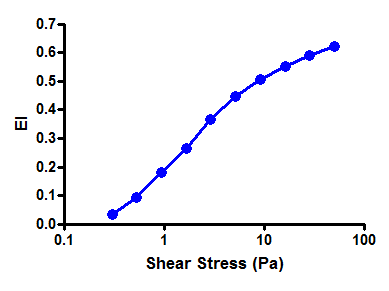KOC UNIVERSITY SCHOOL OF MEDICINE
HEMORHEOLOGY, HEMODYNAMICS AND VASCULAR BIOLOGY LABORATORY
|
Red blood cell deformability Red blood cells (RBC) change their shape extensively under the external forces (e.g., shear forces in the circulatory system) and orient themselves to the flow conditions. This intrinsic property of RBC is know as deformability (i.e., the ability to change shape). RBC deformability is an important determinant of blood flow at various levels of the circulatory system (from main arteries to capillaries). Deformability of RBC is a factor that decreases blood viscosity (hence flow resistance) under high shear forces, that are sufficiently high to induce adequate shape change. Red blood cell deformability is determined by the geometry and material properties of these unique cells. Mammalian red blood cells are non-nucleated and do not carry any organels, their cytoplasm being an amorphous solution which is very rich in hemoglobin. The biconcave-discoid geometry provides an extra surface area, enabling the cell to change its shape without increasing the surface area. There is accumulating evidence for active regulation of red blood cell deformability via alterations the interactions between membrane proteins and spectrin network forming the membrane skeleton of red blood cells. A variety of intracellular signalling pathways have been started to be identified that may play role in this regulation.
Red blood cell deformability is a measurable property, currently the most widely used method being ektacytometry. This method is based on the monitoring of laser diffraction images of cells suspended in a viscous medium under a range of shear stresses, providing elongation indexes as a function of the applied shear stress (see the curve on the right). These curves can be parametrized using curve fitting models. The most widels used parameters are the set of parameters that correspond to those calculated for enzyme kinetics curves: these are "maximal elongation index" (EImax), half-maximal shear stress (SS1/2) and the ratio of SS1/2 to EImax. |

